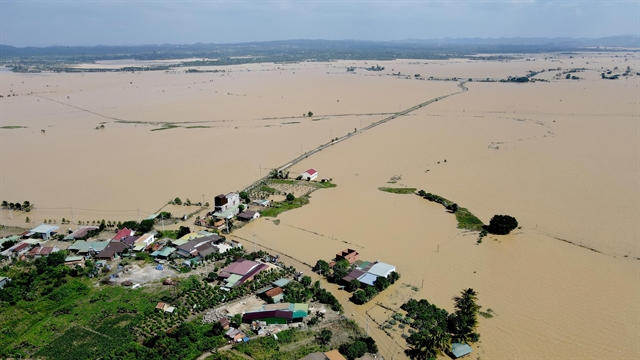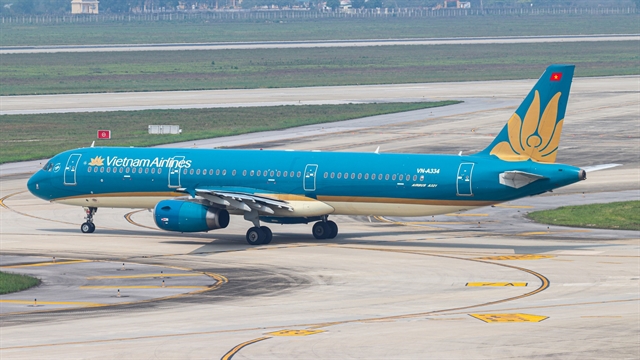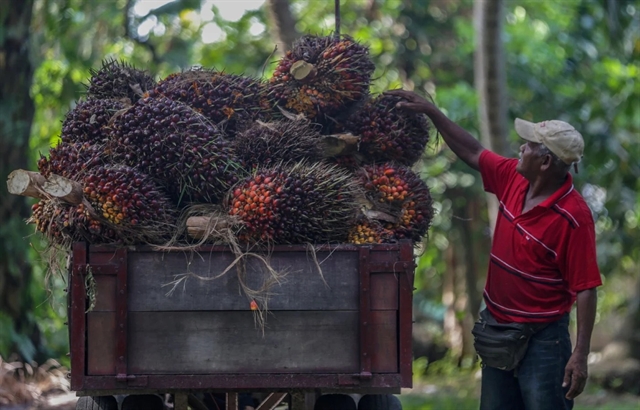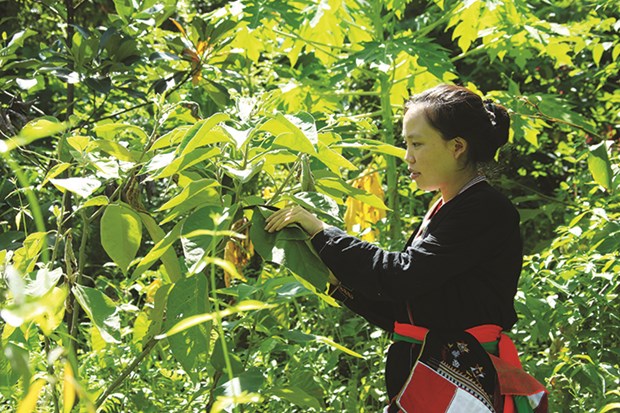 Society
Society

 |
| TOP JOB: Doctor Trương Việt Bình was voted President of the Vietnamese Traditional Medicine Association. Photo courtesy of Tuổi trẻ Thủ đô |
Medical Doctor Trương Việt Bình, president of the Vietnamese Traditional Medicine Association, has dedicated his career to training and building a growing network of traditional medicine workers to better the lives of patients. The experienced practitioner wears many hats: vice-president of the World Chinese Medicine Association, former director of the Việt Nam Traditional Medicine Academy, director of Tuệ Tĩnh Hospital, vice-president of the Việt Nam Acupuncture Association, and president of the Tuệ Tĩnh Traditional Medical School. He spoke exclusively to The Weekend.
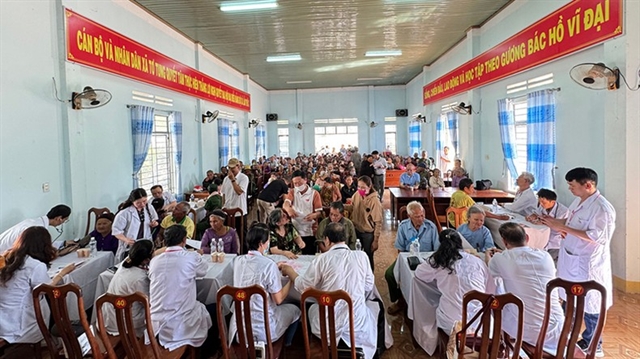 |
| cMEDICAL CROWD: Doctors of the Vietnamese Traditional Medicine Association examined, prescribed and gave free traditional medication to people of Tơ Tung Commune in K'Bang District of Gia Lai Province. Photo courtesy of Nhân Dân newspaper |
The Weekend: Could you explain the mission of the Vietnamese Traditional Medicine Association? Initially named 'Nam Y', or Vietnamese Medicine, how does it differ from 'Đông Y', or Oriental Medicine?
The Vietnamese Traditional Medicine Association was founded in 2017 with 300 members. Today, we have over 3,000 members across 60 chapters nationwide, from the north to the south, and many more are interested in joining.
Our association aims to revive and expand the philosophy of Buddhist monk-herb doctor Tuệ Tĩnh from the 14th century. He famously said, “Nam dược trị Nam nhân” (Southern medicine to treat Southern people), advocating the use of local herbal medicine over imported alternatives [mostly from China in the north].
Born in Hải Dương Province, Tuệ Tĩnh—whose name means "Tranquil Wisdom"—studied both Buddhism and Taoism. Despite passing royal court exams, he declined a court position to focus on studying and promoting herbal medicine. He encouraged pagodas across Việt Nam to cultivate medicinal herb gardens.
Tuệ Tĩnh’s works, Nam dược thần hiệu (Miraculous Drugs of the South) and Hồng Nghĩa giác tư y thư (Medical Knowledge of Compassion), serve as the foundational texts for generations of traditional medicine practitioners. These writings encapsulate the principles of Vietnamese medicine, distinct from other Oriental medical practices.
Our mission is to restore and develop Việt Nam’s rich tradition of herbal medicine. The association isn’t limited to practitioners; we also welcome individuals with expertise or family recipes who can contribute to improving patients’ lives.
The Weekend: Why is there a need to restore traditional medicine practices now? Did they disappear at some point?
During the đổi mới (renewal) period, government subsidies for traditional medicine physicians at communal clinics ceased. Previously, every commune had a clinic staffed by both a western-trained physician or nurse and a traditional medicine practitioner. These clinics provided herbal remedies and treatments for common ailments such as colds, inflammation, and fatigue.
Each clinic also had a garden to grow medicinal herbs, but with the removal of government subsidies, the system collapsed. Traditional medicine practitioners left their roles, and clinics became reliant solely on nurses, often unable to provide comprehensive care.
In remote areas, this creates significant challenges. When people fall ill, they must travel long distances to district or city hospitals. If local clinics could provide basic treatments like acupuncture or herbal medicine, it would alleviate much of this burden. Traditional methods, including acupressure and spine therapy, are effective in relieving pain and preventing unnecessary surgeries.
For example, a patient with a headache might only receive paracetamol at a clinic. However, if the clinic staff had access to a medicinal herb garden, they could have herbal remedies that address the root cause without side effects.
The Weekend: You are a western-trained doctor. Could you elaborate on the advantages of traditional Vietnamese medicine compared to western practices?
There’s no need to compare—they complement each other. Both aim to alleviate pain and treat patients. Traditional medicine is particularly effective for certain conditions, such as red-eye soreness, malaria, or viral fevers, where simple herbs often suffice. The key is to spread knowledge and build trust among the population.
For example, acupuncture can lower blood pressure faster than most western medications. However, traditional medicine cannot perform micro-surgeries or organ transplants. Its strength lies in prevention, slowing the progression of illnesses, and sometimes avoiding surgery altogether.
I’ve dedicated years to studying both disciplines. After completing six years of medicine university training, I spent an additional four years at the Central Traditional Medicine Academy. In total, I invested 15 years in mastering both western and traditional medicine. Today, I teach online to share this knowledge. In a recent session, over 14,000 people joined to learn.
 |
| MEDICINE MAN: Doctor Trương Việt Bình started his career as a western-trained doctor but found his best suited environment was traditional medicine. Photo courtesy of suckhoeviet.org.vn |
The Weekend: What is your plan to restore medical herb gardens at the clinic level nationwide?
We’ve identified 70 types of herbs certified by the Ministry of Health that can be planted in medical herb gardens. Our association guides clinics on planting, harvesting, and storing these herbs for medical use. In addition to the standard list, clinics are encouraged to cultivate local plants known for their medicinal properties.
Restoring these gardens addresses a significant issue: the over-reliance on prescribed or word-of-mouth western medications. Misuse or overuse of such medications often leads to side effects or dependency. By contrast, herbal remedies are gentler and often equally effective.
Another concern is the rise of self-proclaimed “Lương y” (kind-hearted herb doctors). This noble title should only be claimed by those who inherit family recipes passed down through at least three generations. Unfortunately, some individuals misuse the title, marketing expensive herbal concoctions with dubious efficacy or employing people in ethnic costumes to sell their products.
Ethnic communities in remote areas often possess valuable traditional knowledge. It’s vital to document and validate their methods scientifically to prevent superstition and pseudoscience from misleading the public.
The Weekend: What challenges does traditional medicine face today?
One major challenge is public perception. When patients recover quickly using traditional methods, they often underestimate the complexity and expertise involved. For example, a single acupressure point or acupuncture needle can relieve pain effectively, but people may dismiss the skill and knowledge behind it.
Additionally, the commercialisation of traditional medicine has led to a proliferation of unregulated products and practices. Scientific research and certification processes are expensive, deterring many from ensuring their remedies meet safety and efficacy standards. Unfortunately, some experts turn a blind eye, allowing unqualified practitioners to operate unchecked.
As a retiree, I now dedicate my time to charity work, using the knowledge I’ve accumulated to help people understand the true value of traditional medicine. My mission is to preserve this heritage and ensure its benefits reach as many people as possible.
Since the time of Tuệ Tĩnh in the 14th century, local medicinal herb gardens and traditional methods have sustained our nation. This heritage must not only survive but thrive in the modern era. VNS

